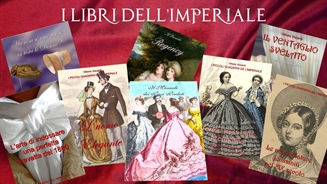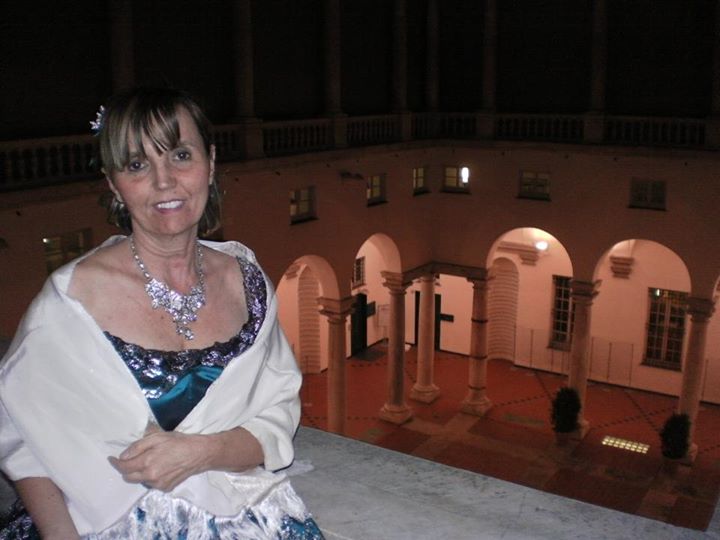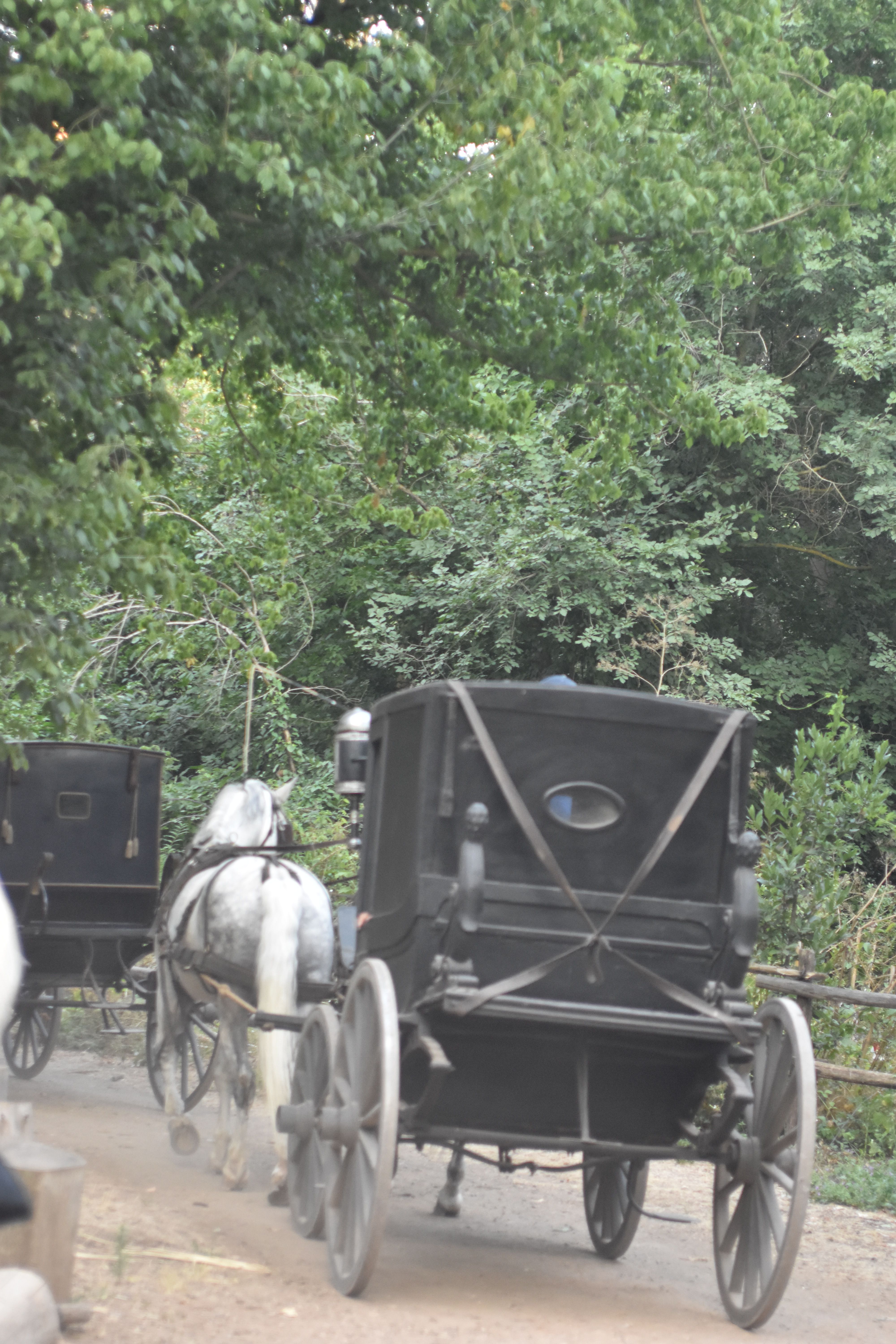ABOUT
The Beauty of serenity
"The quiet is the state that best suits beauty, as the sea,
the experience teaches that the most beautiful creatures are those
with a quiet and well-educated character.
Moreover, the idea of a noble beauty can only be born from a contemplative state of mind, serene and detached from all individual representations".
J.J.Winckelman
History of the Art of Antiquity, 1780
"The quiet is the state that best suits beauty, as the sea,
the experience teaches that the most beautiful creatures are those
with a quiet and well-educated character.
Moreover, the idea of a noble beauty can only be born from a contemplative state of mind, serene and detached from all individual representations".
J.J.Winckelman
History of the Art of Antiquity, 1780




From the study and the passion for this important historical period, came the idea of rebuilding the period in all its original forms. To disseminate and make known 1800 is not to forget its historical memory and important achievements both scientific and behavioural in societies of this intense century. The dances represented a very important part for socialization through the various social classes, were the popular ones and both for those ancient and noble and also for the new emerging classes of merchants who entered the new society no longer dominated by nobles alone Our commitment as Association Academy of victorian Dance , is not only to rediscover these dances and reconstruct them in their original way, leaving aside any contamination after the nineteenth century but also to provide a valid concrete help to people in difficulty. Moreover, the associates can use the books on dances and thematic notebooks written by Vittorio viscardi in order to deepen in the correct way the approach to this century. This need for historical rigour is a very important and essential element for us. Our professionalism in carrying out our work is attested by the long experience acquired over the years and that can be found in the organization of events in Rome, Italy and Europe. In this area we realize and have realized, dance evenings with dinner or meetings such as dancing afternoons and tea dances such as that held in Naples at the Club Officers of the Navy that, with its structure, has provided a setting suitable for the purpose, or like the dances with dinner at Palazzo Savorgnan in Rome, or at the Hotel Quirinale always in Rome, and at the Papal Barracks of 1860, Pio IX and Genoa, at the Palazzo Ducale during a fundraiser for the Hospital gaslini, the debut in society of the students of some Roman high schools, held at the Circle of Finance of Villa Spada and others. In these reconstructions and re-enactments the aim is to allow as many people as possible to participate in the social dance and the dances. The dances are carefully chosen to offer all participants an evening of enjoyment and usability.
In addition to the purely European dances the Association also carries on the study of the dances of North America in a very precise period: "the American Civil War, 1861 - 1865". In Russia , in Moscow , the Academy of victorian Dance was invited and participated in " Times & Epochs ", the largest European commemorative event with 6000 historical re-enactors from all over Europe creating the Italian Boulevard, just a few steps from Red Square, with its historical epochs and with the Academy of victorian Dance that represented the 1800 collecting a great success of public and critics during the seven days of the world event. From the point of view of fun there is a great social component, and that is why we turn to young people to learn the right way to behave in society. The motto of our Association is:
The Ball of Beauty and not the Ball of Buzz
a message directed to all young people who want to rediscover both the elegance of behave properly and relate in society for their future.
The Ball of Beauty and not the Ball of Buzz
a message directed to all young people who want to rediscover both the elegance of behave properly and relate in society for their future.
Academy of Victorian Dance - L'Imperiale, Soci Fondatori
Il progetto di creare una Federazione nasce per garantire alla città di Roma un’appropriata serietà divulgativa e rievocativa, che sia lo specchio dei gloriosi tre millenni di storia di questa città. Venti Associazioni si sono riunite per salvaguardare la divulgazione della Storia con la “S” maiuscola e raccontarla nel modo più corretto proteggendo un bagaglio culturale preziosissimo per l’umanità. L'Associazione rievoca con assoluta storicità, le epoche relative ad ogni singola Associazione, i tipi di danze, i comportamenti della società, la storia.
Per l'Academy of Victorian Dance e L'Imperiale, è la continuazione dell' idea che portiamo avanti da sempre.
Il progetto di creare una Federazione nasce per garantire alla città di Roma un’appropriata serietà divulgativa e rievocativa, che sia lo specchio dei gloriosi tre millenni di storia di questa città. Venti Associazioni si sono riunite per salvaguardare la divulgazione della Storia con la “S” maiuscola e raccontarla nel modo più corretto proteggendo un bagaglio culturale preziosissimo per l’umanità. L'Associazione rievoca con assoluta storicità, le epoche relative ad ogni singola Associazione, i tipi di danze, i comportamenti della società, la storia.
Per l'Academy of Victorian Dance e L'Imperiale, è la continuazione dell' idea che portiamo avanti da sempre.



Mne Gianna Menetti
President of the Association. He has a long experience in the field of dances and carries on this commitment with the utmost seriousness

Mne Debora Ranucci
Vice-president of the Association. Lover of the historical period of the 800, she loves the waltz and the quadrilles that are very congenial to her.

M. Gianni Gianninoto
Secretary of the Association. Very active within the Association, is the researcher and creator of the locations and loves the mazurka.

Mne Serena Caimmi
Co-founder of the Academy. Always present in all the activities, she is very attentive to clothes and waltz lover but does not disdain the polka and the mazurka.

Mne Laura Nuccetelli
Co-founder of the Academy, has always been attracted by this historical period for the complexity and beauty of costumes and hairstyles. He loves the waltz and all the quadrilles.

M. Alessandro D'Orazio
Co-founder of the Academy, he was the first president of the Association. He participated assiduously in many Stages and dances. He does not hide his particular pleasure in dancing the polka-mazurka.

M. Vittorio Viscardi
Co-founder of the Academy. The Master. He has been studying historical dances for many years and makes them available to all those who want to learn new dances.

Mlle Flavia
The youngest member of the Historical Dances Group. She is so good not only at dancing but also at remembering and has become the vice-master.

Mne Rita Aromolo
Always with the Academy, he immediately showed a lot of commitment to the dances of 1800, distinguishing himself in particular for the study of the polka.

Mne Piera Sabetta
Passionate about the 19th century, its codes of conduct and its engaging and cheerful dances. He loves dancing in dancing Teas and internships that he finds particularly interesting.

Mne Rita Fraioli
An expert and tireless dancer, she travels through all the ages with clothes and grace always adapted to the various historical periods she goes through. But 800 is still his favorite time.

Mne Silvana Ingegneri
His grace is unmistakable. It moves within the ballroom with elegance and gracefulness and then it launches resolutely in all genres of dance always gaining much admiration.

Mne Antonella
1800 is the ideal century for her. It is perfectly identified in the historical period of romance and dance with assiduous Redowa.

Mne Mimma De Cesaris
Great dances are the ideal environment in which he knows how to move with gracefulness and confidence. He is considered by everyone an example of grace and loves the waltz.

M. Luigi Barbarossa
His appearance betrays his being a gentleman at all times. Master of the ball and affirmed "Porteur", he prefers every type of dance.

Mne Patrizia Rustichelli
The mastery and elegance of this lady is now established in every field. She loves very much the quadrilles in every type of dance.

M. Massimo Mancini
The knowledge of the dances and its elegance make it one of the most requested "Chevalier". It prefers the lively dances that enliven the evenings.
NEWS

Regency Era
Fashion and the industrial revolution in the nineteenth century.
Between the end of the 18th century and the beginning of the 19th century, the textile industry took a leap forward and managed to satisfy not only the demands of the wealthy classes, but also those of the middle and low bourgeoisie.
This was possible thanks to the inventions that led to the industrial revolution, that is to say, to the process of economic evolution, that of an agricultural, handicraft and commercial system, led to a modern industrialised system characterized by the use of machines driven by mechanical energy and the massive exploitation of new energy sources, including fossil fuels.
The nineteenth century can be divided into different stylistic periods:
1796 - 1821 circa, neoclassicism
1822 - 1865 circa, Romanticism
1866 - 1888 circa, eclectic
1889 - 1910 circa, Liberty
Between the end of the 18th century and the beginning of the 19th century, the textile industry took a leap forward and managed to satisfy not only the demands of the wealthy classes, but also those of the middle and low bourgeoisie.
This was possible thanks to the inventions that led to the industrial revolution, that is to say, to the process of economic evolution, that of an agricultural, handicraft and commercial system, led to a modern industrialised system characterized by the use of machines driven by mechanical energy and the massive exploitation of new energy sources, including fossil fuels.
The nineteenth century can be divided into different stylistic periods:
1796 - 1821 circa, neoclassicism
1822 - 1865 circa, Romanticism
1866 - 1888 circa, eclectic
1889 - 1910 circa, Liberty

Victorian Era
In the nineteenth century only the richest families could afford a wardrobe composed of: a dress for the morning, one for the lunch, one for the afternoon visits, one for the normal dinner, one for the elegant dinners and one for the dance evenings.
Nineteenth-century fashion began a process of evolution that led to rapid changes and a modification of lines every five to ten years. In the early years of the century Empire style was imposed, which stood out for its soft lines and high waist placed under the breast and for the almost total absence of rigid structures (Regency or neoclassical).
Resumed the forms of ancient times: Greek and Roman.
Then the typical romantic fashion was imposed: life lowered and returned to the natural point and then went down slightly below it; the busts became adherent and with splints, the skirts, thanks to the crinoline, swelled.
The new crinolines replaced the eighteenth-century paniers. The crinoline was initially made of horsehair, hence its name, then strengthened metal circles.
In the 1850s with the crinoline cage, the circumference of the skirt was extended to a few meters, until reaching its maximum dimensions between 1855 - 1860; at the time of its maximum splendor, it even reached the circumference of seven meters.
Nineteenth-century fashion began a process of evolution that led to rapid changes and a modification of lines every five to ten years. In the early years of the century Empire style was imposed, which stood out for its soft lines and high waist placed under the breast and for the almost total absence of rigid structures (Regency or neoclassical).
Resumed the forms of ancient times: Greek and Roman.
Then the typical romantic fashion was imposed: life lowered and returned to the natural point and then went down slightly below it; the busts became adherent and with splints, the skirts, thanks to the crinoline, swelled.
The new crinolines replaced the eighteenth-century paniers. The crinoline was initially made of horsehair, hence its name, then strengthened metal circles.
In the 1850s with the crinoline cage, the circumference of the skirt was extended to a few meters, until reaching its maximum dimensions between 1855 - 1860; at the time of its maximum splendor, it even reached the circumference of seven meters.

American Civil War Era
With Worth, the tailor of Empress Eugenia, wife of Napoleon III , in 1865, we witnessed the launch of a new rigid structure type, which had the effect of flattening the skirt front and stretching it on the back; this new structure was called demi crinoline.
The skirt was enriched with decorations and inlays of fabric, which created a fascinating and lively effect; this type of fashion characterized the second half of the 1870’s.
At the end of the 1880s the evolution of the crinoline ended.
The woman got rid of this structure and her figure became more natural, with the skirt of scampanata shape, more functional and modern, which already foreshadowed the most modern forms of the Bèlle epoque.
The skirt was enriched with decorations and inlays of fabric, which created a fascinating and lively effect; this type of fashion characterized the second half of the 1870’s.
At the end of the 1880s the evolution of the crinoline ended.
The woman got rid of this structure and her figure became more natural, with the skirt of scampanata shape, more functional and modern, which already foreshadowed the most modern forms of the Bèlle epoque.



L'Academy of Victorian Dance pubblica i libri e i quaderni di scritti da Vittorio Viscardi. Questi libri sono i compendi ideali per chi vuole addentrarsi più profondamente nel periodo.
Nei libri, oltre che una descrizione della società ottontentesca e dei costumi, trovano posto le descrizioni dettagliate delle danze con i giusti movimenti. Inoltre una parte è dedicata all'abbigliamento e ai gioielli. La bibliografia è tratta da manuali d'epoca francesi, italiani, inglesi, americani e russi a dimostrazione che l'800 fu un secolo che unì l'Europa, almeno per le danze!
Nei libri, oltre che una descrizione della società ottontentesca e dei costumi, trovano posto le descrizioni dettagliate delle danze con i giusti movimenti. Inoltre una parte è dedicata all'abbigliamento e ai gioielli. La bibliografia è tratta da manuali d'epoca francesi, italiani, inglesi, americani e russi a dimostrazione che l'800 fu un secolo che unì l'Europa, almeno per le danze!

The journey in 1800 continues with the CDs containing the music of that period playing on the piano; careful research that will please those who listen to them.

CONTACT
Want to know more? You can contact us by this form.
CONTACT ADDRESS
balli800@limperiale.it
balli800@limperiale.it



















